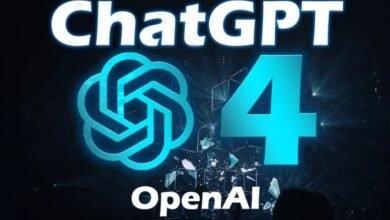What improvements have been made to GPT-4’s training and architecture?

Generative Pre-trained Transformer (GPT) language models have revolutionized the field of natural language processing (NLP) and the upcoming release of GPT-4 is highly anticipated. We will explore the key improvements made to GPT-4’s training and architecture.
What is GPT-4?
GPT-4 is the next iteration of the GPT language models developed by OpenAI. While details about the model are scarce, it is expected to be more powerful and capable than its predecessor, GPT-3.
What improvements have been made to GPT-4’s training?
- Data: GPT-4 is expected to be trained on an even larger dataset than GPT-3, which was trained on a massive dataset of web pages, books, and other text sources. The increased size of the dataset could lead to improvements in the model’s ability to understand and generate natural language.
- Multi-task learning: GPT-4 is expected to be trained using a multi-task learning approach. This means that the model will be trained to perform multiple NLP tasks simultaneously, such as natural language generation, question answering, and language translation. This approach could lead to improvements in the model’s ability to generalize to new tasks.
- Curriculum learning: GPT-4 is expected to use a curriculum learning approach during training. This means that the model will start by learning simpler tasks before moving on to more complex tasks. This approach could lead to faster and more effective training of the model.
What improvements have been made to GPT-4’s architecture?
- Sparse attention: GPT-4 is expected to use a sparse attention mechanism, which allows the model to focus on only a subset of the input tokens at any given time. This could lead to improvements in the model’s efficiency and ability to handle longer sequences of text.
- Hybrid architecture: GPT-4 is expected to use a hybrid architecture that combines both feedforward and recurrent neural network layers. This could lead to improvements in the model’s ability to handle both short and long-term dependencies in text.
- Parameter sharing: GPT-4 is expected to use parameter sharing across different layers of the model. This means that some of the parameters in the model will be shared between different layers, which could lead to improvements in the model’s efficiency and ability to generalize to new tasks.
Conclusion
GPT-4 is expected to be a significant advancement in the field of natural language processing, with improvements in both its training and architecture. The larger dataset, multi-task learning approach, and curriculum learning approach used in GPT-4’s training could lead to improvements in the model’s ability to understand and generate natural language. The use of a sparse attention mechanism, hybrid architecture, and parameter sharing in GPT-4’s architecture could lead to improvements in the model’s efficiency and ability to handle both short and long-term dependencies in text. Researchers and industry professionals will be eagerly awaiting the release of GPT-4 and the opportunity to test its capabilities.






